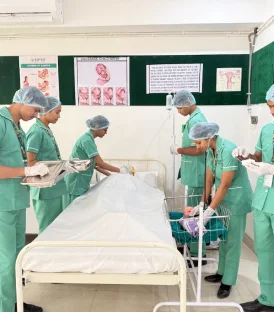April 03, 2024
Cardiac catheterization stands as a cornerstone in the diagnosis and treatment of cardiovascular diseases, providing invaluable insights into the functioning of the heart and its associated vessels. This minimally invasive procedure, also known as coronary angiography, involves the insertion of a thin, flexible tube (catheter) into a blood vessel, typically in the groin or arm, and advancing it towards the heart. Here, we delve into the intricacies of cardiac catheterization, its significance and the advancements in this field.
Diagnostic Utility:
Cardiac catheterization plays a pivotal role in diagnosing various heart conditions, including coronary artery disease (CAD), valvular heart disease, congenital heart defects, and myocardial infarction. By injecting a contrast dye through the catheter and into the coronary arteries, cardiologists can visualize blood flow, identify blockages or narrowings, and pinpoint areas of concern. This detailed imaging helps in accurate diagnosis and guide for subsequent treatment decisions.
Therapeutic Applications:
Beyond diagnosis, cardiac catheterization serves as a therapeutic tool for managing cardiovascular disorders. Percutaneous coronary intervention (PCI), commonly known as angioplasty, is a procedure often performed during cardiac catheterization to restore blood flow in blocked or narrowed coronary arteries. Using specialized instruments, such as balloons and stents, cardiologists can widen the narrowed arteries and ensure improved blood supply to the heart muscle, alleviating symptoms and reducing the risk of complications.
Advancements and Innovations
Advancements in technology have propelled cardiac catheterization to new heights, enhancing both its diagnostic accuracy and therapeutic efficacy. The advent of intravascular imaging techniques, such as intravascular ultrasound (IVUS) and optical coherence tomography (OCT), allows for high-resolution imaging of the coronary arteries, facilitating precise assessment of plaque characteristics and guiding optimal treatment strategies. Additionally, the development of drug-eluting stents has significantly reduced the incidence of restenosis which has enhanced the long-term outcomes of PCI procedures.
Safety and Minimal Invasiveness:
One of the key advantages of cardiac catheterization is its minimally invasive nature, which translates into reduced risks and quicker recovery for patients. Compared to traditional open-heart surgeries, which entail significant incisions and longer hospital stays, catheter-based procedures offer a less traumatic alternative with shorter recovery times, enabling patients to resume their daily activities sooner. Moreover, advancements in catheter design and procedural techniques have further improved safety profiles, minimizing complications and enhancing overall patient comfort.
Conclusion:
In conclusion, cardiac catheterization stands as an indispensable tool in the management of cardiovascular diseases, providing both diagnostic insights and therapeutic interventions. With continuous advancements in technology and procedural techniques, this minimally invasive procedure offers patients a safer, more effective alternative to traditional surgical approaches. As we move forward, further research and innovation in the field of cardiac catheterization hold the promise of improving outcomes and revolutionizing the landscape of cardiovascular care.
Submitted By
Dr. Roopal Chawla Mehandroo
22 March 2024

















